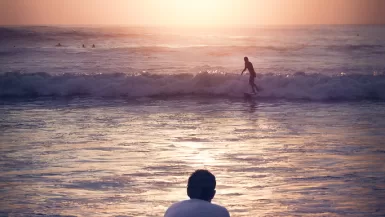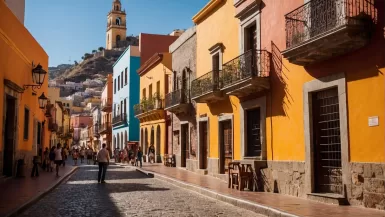Mexico’s best-kept secret: the mesmerizing cenotes. Plunge into crystal-clear waters, explore hidden caves, and immerse yourself in a world of natural wonder. From Tulum’s Dos Ojos to Valladolid’s Cenote Zaci-Ha, our guide unveils the top cenotes, insider tips, and fascinating FAQs. Get ready to create unforgettable memories in these enchanting aquatic havens. Dive into the unknown and experience the magic of Mexico’s cenotes like never before.
Mexico boasts an incredible natural treasure that often goes unnoticed by tourists: Cenotes. These remarkable geological formations provide unique opportunities for swimming, snorkeling, and diving while being surrounded by a lush and vibrant environment. In this comprehensive guide, we will delve into the best cenotes Mexico has to offer, from the Yucatan Peninsula to the stunning Riviera Maya.
What is a Cenote?
Cenotes are natural sinkholes filled with freshwater, predominantly found throughout the Yucatan Peninsula in Mexico. These geological wonders are formed as a result of the collapse of limestone bedrock, exposing hidden underground pools of water. Cenotes come in various forms, such as open-air pools and enclosed caves, each offering a unique experience for visitors.
The Formation of Cenotes
The Yucatan Peninsula is a vast limestone platform that contains a massive network of caves beneath its surface. Over time, the collapse of limestone bedrock has led to the formation of cenotes. The caves in the region were flooded around 11,700 years ago, at the end of the last Ice Age, preserving stalagmites, stalactites, and other intriguing rock formations within the freshwater.
With over 6,000 cenotes scattered across the Yucatan Peninsula, these natural wonders were once vital sources of freshwater and sacred ceremonial sites for the ancient Mayans.
The Best Cenotes in Mexico: Top 10 Picks
We have carefully curated a list of the top 10 cenotes in Mexico that you should consider visiting during your trip. Each cenote offers a unique experience, so be sure to explore as many as you can!
1. Dos Ojos – Tulum
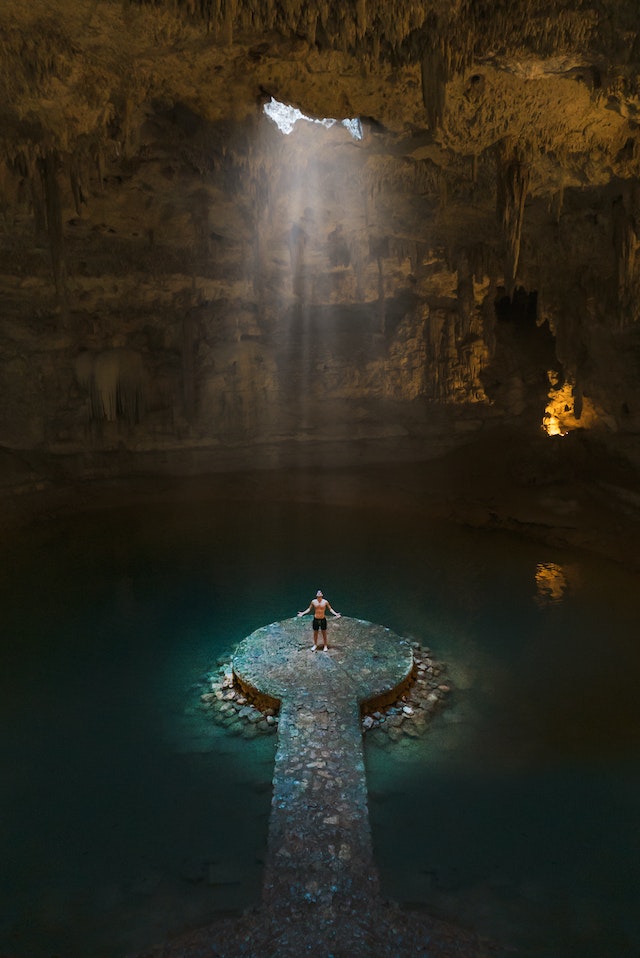
Dos Ojos, or “Two Eyes” in Spanish, is a captivating cenote located near Tulum. This cenote comprises two large sinkholes connected by an extensive underwater cave system. Dos Ojos is renowned for its crystal clear waters, this is why its a popular destination for scuba diving and snorkeling. With its fascinating cave formations and diverse marine life, Dos Ojos is undoubtedly one of the best cenotes in Mexico.
- Dos Ojos Cenote Private Tour with Mayan lunch
- Coba & Punta Laguna from Tulum & Dos Ojos Snorkel Trip (All Inclusive)
2. Gran Cenote – Tulum
Another must-visit cenote near Tulum is the Gran Cenote. This enormous underground cave system offers a stunning swimming experience amidst vibrant plant and animal life. The crystal-clear waters allow for excellent visibility, making it perfect for swimming, snorkeling, and exploring. Despite its popularity and occasional crowds, Gran Cenote remains a top choice for cenote seekers. Discover Breathtaking Cenotes in Tulum
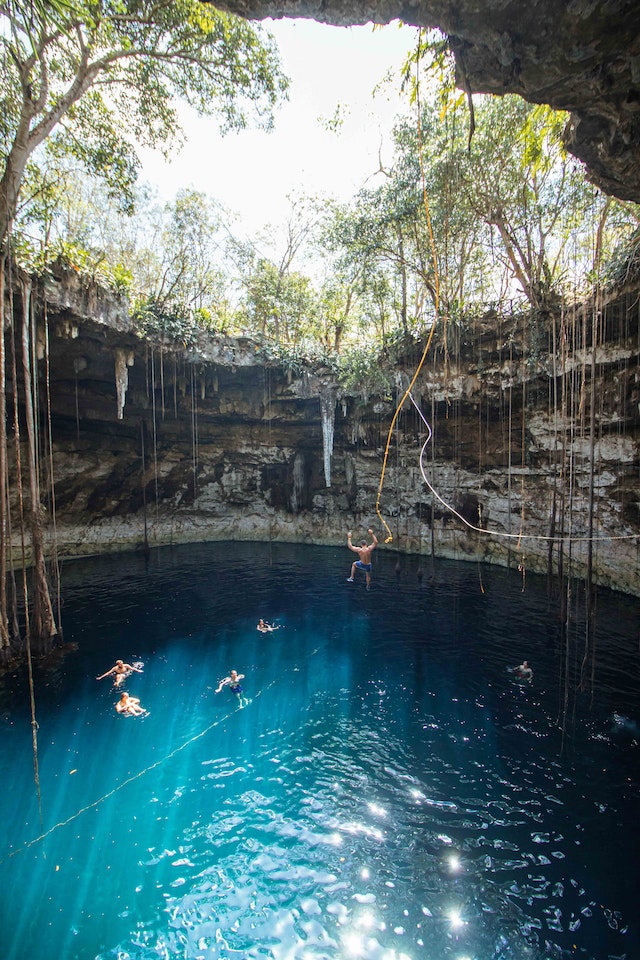
3. Cenote Manati (Casa Cenote) – Tulum
Cenote Manati, also known as Casa Cenote, is a unique open-air cenote near Tulum. Named after the manatees that once frequented the site, this river-like cenote is an excellent spot for swimming and enjoying the clear waters on a sunny day. With its easy accessibility and thriving aquatic ecosystem, Cenote Manati is a must-visit location for cenote enthusiasts.
4. Cenote Calavera – Tulum
Cenote Calavera is a small yet distinctive cenote near Tulum that offers a more adventurous experience. This cave cenote features a hole in the ground with a ladder leading down to an underground pool. For thrill-seekers, jumping off the surrounding rocks into the “Pit” provides an exhilarating experience. Cenote Calavera is really popular among scuba divers, making it a worthy addition to your cenote itinerary.
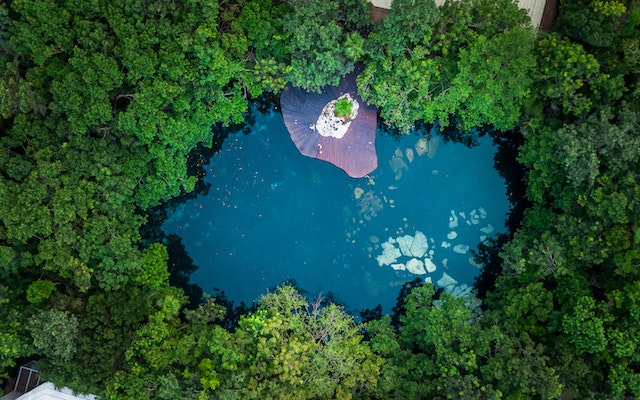
5. Cenotes Cristalino and Escondido – Tulum
Cenotes Cristalino and Escondido are two beautiful open-air cenotes located just minutes from Tulum. These cenotes are situated across the road from each other, making them convenient to explore both in a single visit. With their clear waters, scenic surroundings, and opportunities for swimming and platform jumping, a visit to Cristalino and Escondido is a must for cenote lovers.
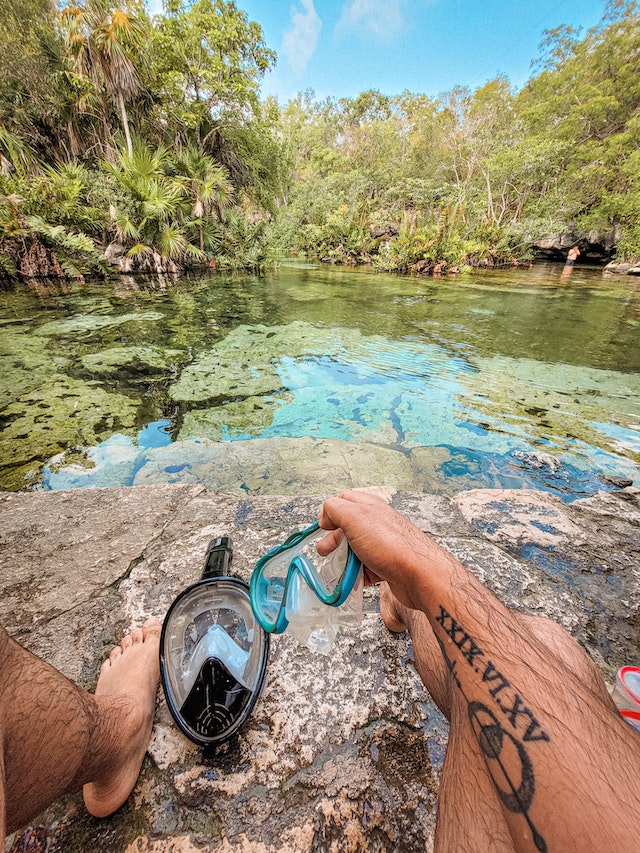
6. Cenotes Yaxmuul – Tulum
Cenotes Yaxmuul, located near the Jungle Maya Park, is considered one of the most spectacular cenotes in the area. These cenotes are relatively less crowded compared to other popular spots near Tulum, allowing for a more peaceful experience. Reaching Yaxmuul involves a scenic drive down a dirt road, and many visitors opt for guided tours that include ATV rides and other adventure activities.
7. Cenote Aktun-Ha – Tulum
Cenote Aktun-Ha, or “Car Wash” cenote, is a stunning open-air cenote with a fascinating history. Taxi drivers are often used this cenote to collect water for washing their cars. Today, Aktun-Ha is a popular spot for swimming and snorkeling, with its clear waters showcasing beautiful rock formations, fish, and turtles. The cenote’s sunbathing deck is perfect for relaxing and taking a refreshing plunge into the water. Half-Day Private Tulum and Sak Aktun Cave Cenote Tour from Cancun
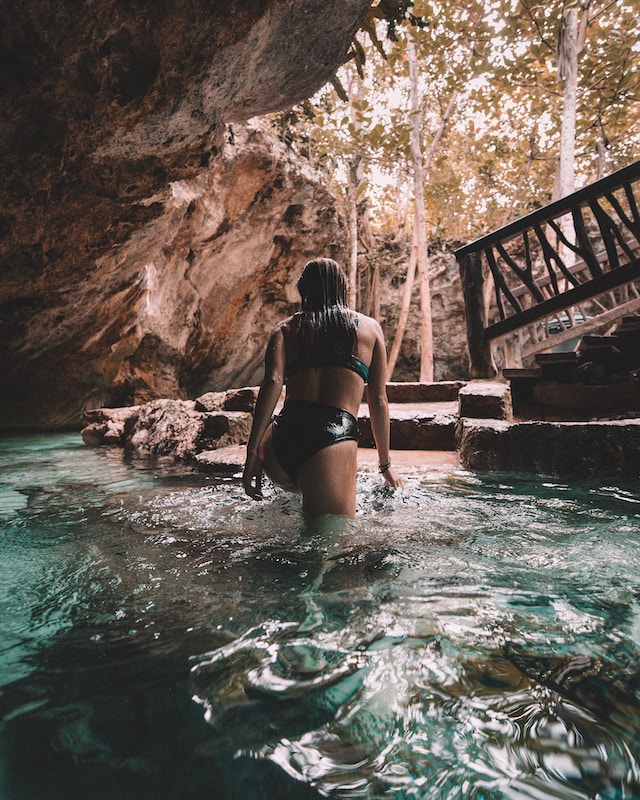
8. Cenote Choo-Ha – Coba
Located near the Mayan ruins of Coba, Cenote Choo-Ha is a series of three cave cenotes that provide a refreshing break from sightseeing. The cenote’s name translates to “water that drips” due to the vast stalactites found within the cave. Visitors can descend a long wooden staircase into the underground cenote for a unique and memorable experience.
9. Cenote Zaci-Ha – Valladolid
Cenote Zaci-Ha is a massive open-air cenote near Valladolid, boasting a breathtaking half-cave arch over a deep pool of water. This cenote is surely for swimming rather than snorkeling and is generally less crowded than other locations. With an affordable entrance fee of just 30 pesos, Cenote Zaci-Ha is well worth a visit. Private Cenote & Valladolid Tours.
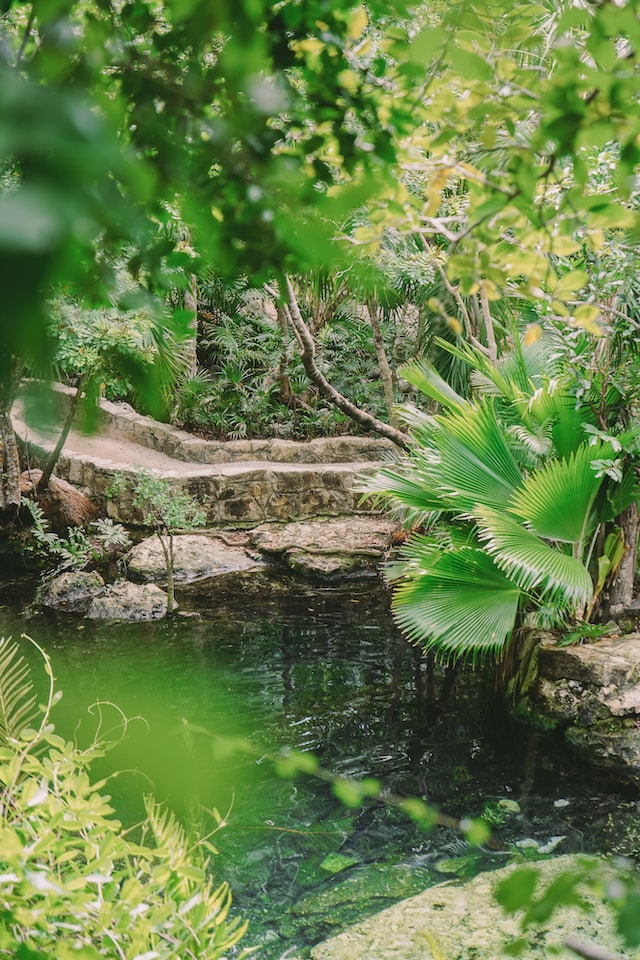
10. Cenote X’Canche – Valladolid
Cenote X’Canche, located near the Ek Balam Archaeological Site, is a large open-air cenote with a recreational area and several activities on offer. Visitors can enjoy sunbathing on the decks, jumping off platforms, and even trying out a short zipline. The entrance fee of 150 pesos provides access to this fun and exciting cenote.
Exploring Cenotes: Tips and Recommendations
Whether you’re a seasoned cenote explorer or a first-timer, here are some tips and recommendations to make the most of your cenote experience:
- Bring swimwear, sunscreen, water, sandals or flip-flops, and a towel.
- Leave valuables at home.
- Many cenotes offer changing facilities, gear rental, and snacks on-site.
- Consider visiting cenotes as part of a tour, especially if you’re a solo traveler or want to meet new people.
- Always respect the natural environment and local customs when visiting cenotes.
- Is it Safe to Go to Tulum, Mexico? [2023]
Map of the Best Cenotes in Yucatan
Conclusion
Cenotes in Mexico offer a unique and unforgettable experience for visitors of all ages and interests. Whether you’re looking for a refreshing swim, an exhilarating snorkeling adventure, or a peaceful retreat amidst nature, Mexico’s cenotes have something for everyone. Don’t miss the chance to explore these breathtaking natural wonders during your trip to Mexico!
FAQ – Frequently Asked Questions – Cenotes in Mexico
Cenotes in Mexico are natural sinkholes or underground caves filled with freshwater. They are unique geological formations found in the Yucatán Peninsula and other parts of Mexico.
Cenotes are formed through a combination of geological processes. They occur when limestone bedrock collapses, exposing underground water sources. The sinkholes are often connected to vast underground cave systems.
Yes, most cenotes are safe for swimming. The water in cenotes is generally clear and clean, making them popular spots for swimming, snorkeling, and diving. However, it’s always advisable to follow safety guidelines and inquire about any specific restrictions or conditions at the cenote you plan to visit.
Cenotes are renowned for their scuba diving opportunities. Cave diving in cenotes is a unique experience, but it requires proper training and certification. Only experienced divers should venture into the submerged cave systems, as they can be complex and challenging.
Yes, most cenotes are open to the public. Some cenotes are privately owned and will charge an entrance fee, while others are located within public parks or nature reserves. I recommend to check the opening hours, entrance fees (if applicable), and any specific rules or regulations before visiting.
Absolutely! Cenote hopping is a popular activity in Mexico. Visitors often explore multiple cenotes in a single day, taking advantage of their unique features and natural beauty. Guided tours are available that offer transportation and visits to different cenotes in the area.
When visiting a cenote, it’s advisable to bring the following essentials:
Swimwear and a towel
Biodegradable sunscreen
Water shoes or sandals
Snorkeling or diving gear (if needed)
Drinking water
Insect repellent
Cash for entrance fees, rentals, or any additional services
Ancient Mayans valued cenotes. The Mayans worshipped cenotes as doorways to the underworld and utilised them for rituals. Cenotes are still preserved as natural and cultural assets.
Yes, cenotes can be affected by seasonal changes and weather conditions. Traditionaly the rainy season, water levels in cenotes may rise, and the currents can become stronger. It’s generally recommended to check local weather forecasts and inquire about any potential closures or safety concerns before planning a visit.
Resources & Informational Links
- Tulum, Mexico:
- Official website of Tulum Tourism: https://tulum.gob.mx/
- Tulum Archaeological Zone (National Institute of Anthropology and History): https://inah.gob.mx/zonas/143-zona-arqueologica-de-tulum
- Visit Mexico – Tulum: https://www.visitmexico.com/en/main-destinations/quintana-roo/tulum
- Riviera Maya, Mexico:
- Official website of Riviera Maya Tourism: https://www.rivieramaya.com/
- Visit Mexico – Riviera Maya: https://www.visitmexico.com/en/main-destinations/quintana-roo/riviera-maya
- Yucatan Peninsula, Mexico:
- Official website of Yucatan Tourism: http://www.yucatan.travel/
- Visit Mexico – Yucatan Peninsula: https://www.visitmexico.com/en/main-destinations/yucatan
- Dos Ojos Cenote, Tulum:
- Dos Ojos Cenote (Mexican Cenotes): https://mexicancenotes.com/cenote/dos-ojos/
- TripAdvisor – Dos Ojos Cenote: https://www.tripadvisor.com/Attraction_Review-g150813-d186222-Reviews-Cenotes_Dos_Ojos-Tulum_Yucatan_Peninsula.html
- Gran Cenote, Tulum:
- Gran Cenote (Mexican Cenotes): https://mexicancenotes.com/cenote/gran-cenote/
- TripAdvisor – Gran Cenote: https://www.tripadvisor.com/Attraction_Review-g150813-d246620-Reviews-Gran_Cenote-Tulum_Yucatan_Peninsula.html
- Coba, Mexico:
- Official website of Coba Archaeological Zone (National Institute of Anthropology and History): https://inah.gob.mx/zonas/37-zona-arqueologica-de-coba
- Visit Mexico – Coba: https://www.visitmexico.com/en/main-destinations/quintana-roo/coba
- Valladolid, Mexico:
- Official website of Valladolid Tourism: https://www.valladolid.travel/
- Visit Mexico – Valladolid: https://www.visitmexico.com/en/main-destinations/yucatan/valladolid



